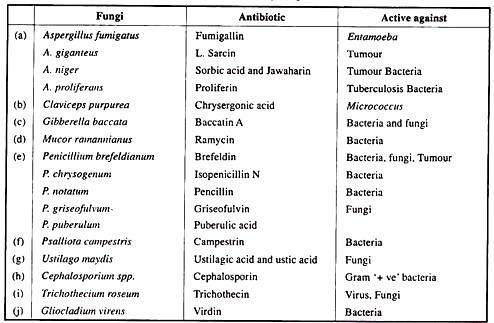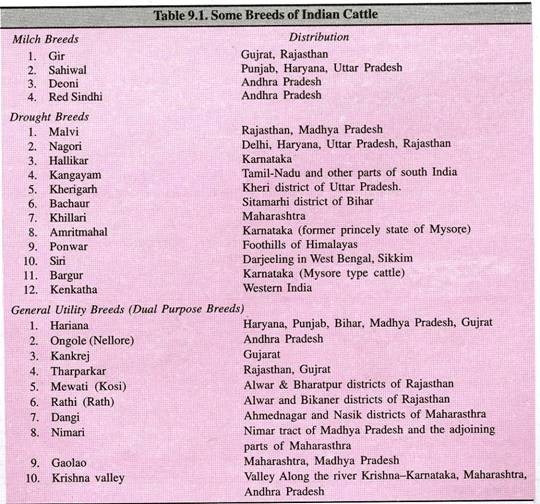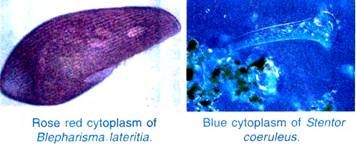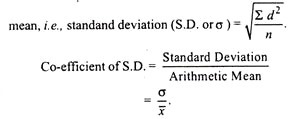The nucleus consists of the following main parts:
(1) Nucleolemma or nuclear membrane (karyotheca) (2) Nuclear sap or karyolymph or nucleoplasm (3) Chromatin network or fibres (4) Nucleolus (5) Endosomes.
Contents
[I] Nuclear membrane (karyotheca):
The nucleus is separated from the cytoplasm by a limiting membrane called as karyotheca or nuclear membrane.
This membrane plays an important role for the transport of the material between the nucleus and the cytoplasm. Nuclear envelope regulates nucleocytoplasmic exchanges and coordinates gene action with cytoplasmic activity.
It has direct connections with the endoplasmic reticulum and during cell division, this nuclear envelope (nuclear membrane) develops as an extension of the endoplasmic reticulum applied to the nucleus and subsequently modified. In the end of mitosis, i.e, in telophase, the cisternae of the endoplasmic reticulum gather around the chromosomes and by fusing together they form the nuclear membrane.
Structure:
The nuclear membrane appears to be a double membrane having interruptions or pores at intervals. The outer one is called ectokaryotheca and inner one is termed endokaryotheca. Each of the membranes is about 75 to 90 A thick and both the membranes enclose an intervening space of about 100-150 A (Robertis et al., 1970), or 100 to 300 A (Cohn, 1970) or 400 to 700 A (Burke, 1970), called as perinuclear space or cisterna.
Outer nuclear membrane is comparatively thicker than the inner membrane and has a rough outline due to the presence of attached RNA particles which may form spirals, parallel lines or crescents. The inner membrane is smooth having no ribosomes. The nuclear membrane is followed by a supporting membrane, the fibrous lamina, of uniform thickness (300 A thick).
Nuclear pores:
The nuclear membrane possesses a number of nuclear pores or annuli, which vary from 40 to 145 per square micro-meter in nuclei of various plants and animals. Watson (1959) stated the number of pores in mammalian cells as 10 percent of the total surface of the nucleus. In amphibian oocytes, certain plant cells and protozoa the surface occupied by the pores may be as high as 20 to 36 percent.
The nuclear pores are octagonal in shape, their diameter varies from 400-1000 A, and they are separated from each other by a space of 1500 A. The nuclear pores are enclosed by circular annuli. At the annulus the inner and outer membranes of the nuclear envelope fuse.
The pores and annuli collectively form the pore complex. Eaqh annulus consists of eight granules of about 15 nm, which are present on both the nuclear and cytoplasmic surfaces. Inside the pore is a central granule. Fine fibrils (about 30 A in diameter) extend from central granule to the peripheral granules, forming a cartwheel structure.
A less defined amorphous annular material is present in the opening itself. This material is digested by trypsin and remains unaffected when exposed to ribonuclease and deoxyribonuclease. It means that annular material is protein in nature. The pore complex is a rigid structure present in a fixed number according to cell type. In certain physiological stages, however, they may change in number.
For example, they are reduced in number in maturing erythroblasts and spermatids and it is due to low transcriptional activity of these cells. In some cases, the pore complex is covered by a thin membrane. It has been suggested that the annulus may serve as a sphincter, alternately decreasing and increasing the size of the pore with varying conditions.
Some evidence suggests the presence of myosin in the annulus area (Du Praw, 1970). Annulus is supposed to be a hollow cylinder fitting into the nuclear pore (Witschnitzer, 1958). The lumen of the cylinder is 500 A in diameters representing the nuclear pore.
The wall of the cylinder consists of eight evenly placed microtubules or microcylinders. Each microtubule is about 200 A in diameters. According to Viviers, a central microtubule of 150 to 180 A diameters is present with in the lumen of annulus and is attached to its inner wall by fibrous struts.
Amorphous annular material extends beyond the pore margins (Franke and co-workers, 1966-74). The materials exchanged between nucleus and cytoplasm must traverse the nuclear pore complexes. Thus, annuli or pores control the passage of some molecules and particles, even some ribosome components, between nucleus and cytoplasm. This exchange is very selective and allows passage of only certain molecules of either low or very high molecular weight. The nuclear envelope is a diffusion barrier for ions as small as K+, Na+ or Сl–.
On the other hand, very large structures such as ribosomal subunits, which are assembled in the nucleolus, are able to leave the nucleus through the nuclear pore complexes. The unit membranes of karyotheca are composed of protein and lipid, like plasma membrane.
At the margins of these pores, the two unit membranes are continuous and at certain places this nuclear membrane joins the membrane of endoplasmic reticulum. In the apothecial (reproductive) cells of Mollisia (an ascomycetes fungus), the nuclear membrane makes direct contact with the plasma membrane of cell.
[II] Nuclear sap (karyolymph or nucleoplasm):
The nucleus contains a transparent, semi-solid, granular and homogeneous matrix during interphase called as nuclear sap or karyolymph (enchylema). This karyolymph is a fluid substance containing many particles and network. Primarily it is composed of proteinous material and is the main site for enzyme activity. This nuclear sap also shows variable appearance during different stages of cell division. There is some evidence that karyolymph contributes to the formation of the spindle apparatus in plants.
Recently, Bernhard (1968) has described the localization of RNP (ribonucleoprotein) in the nucleus, being mainly fibrillar and granular types. Besides, in nucleoplasm, there are (i) interchromatic RNP fibrils located near the chromatin, (ii) interchromatic RNP granules measuring about 250A in diameter and present around chromatin, (iii) Perichromatic RNP granules of about 450A diameter, and (iv) large RNP coiled bodies and RNA granules of 300-400A in diameter. In nuclei of Amoeba, there are present helices of about 700|i length and 300-800A in diameter.
Nuclear constituents:
The nucleus contains RNA, DNA, proteins of two kinds, histone and nonhistone; some lipids; various organic phosphorus compounds; and various inorganic compounds, mostly salts (Davidson, 1976).
DNA:
In Salmon sperm heads, which are mostly occupied by nucleus, may constitute 48.5 % of the dry, fat-free substance. Generally less than half the dry weight is DNA but the amount varies from species to species. DNA remains constant and do not vary with nutrition or during starvation, while proteins in nuclei vary, presistent (ultra-structure,)
RNAs:
Three kinds of RNA are present in cells: ribosomal (rRNA), transfer (tRNA) and messenger (mRNA). RNA contains nucleotides of the purines, adenine and guanine and pyrimidines, cytosine and uracil. In any of these RNAs the ratio of the bases to one another is constant for a species. However, rRNA, tRNA and mRNA separated from one another disclose different base ratio, indicating difference^ in their chemical composition.
The tRNAs have low molecular weight of about 25,000, the rRNAs have molecular weights running to several million, and mRNAs are from half a million to several million. Differences also exist in the affinities of the various RNAs for other molecules (Lehninger, 1975). The rRNA is synthesized and assembled in the nucleolus, tRNAs and mRNAs are synthesized on the chromosomes, and all the RNAs enter the cytoplasm through the nuclear pores.
Enzymes:
The nucleus contains a number of enzymes and performs metabolism, including synthesis of DNA and various RNAs. Nucleus lacks the enzymes for aerobic metabolism that are found in mitochondria, but it contains enzymes for anaerobic metabolism and for formation of high-energy phosphates. It also contains enzymes for coenzyme synthesis (nicotinamide adenine dinucleotide or NAD).
Proteins:
A variety of proteins is present in the nucleus: nucleoproteins, enzymes and structural proteins. The nucleoproteins form two classes, deoxyribonucleoproteins and ribonucleoproteins.
Deoxyribonucleoproteins:
These largely form the chromosomes; consist primarily of histories and DNA in about equal amounts. However, chromosomes also contain non-histone proteins in smaller amounts.
Unlike histones, most of the nonhistone proteins are acidic, and they vary qualitatively in different cell types of the same organism.
Non-histone proteins are complexed to areas of DNA whose information is being expressed. Hence it has been suggested that nonhistone proteins, along with chromosomal RNA which also binds to certain active portions of DNA, may somehow be involved in the specific control of gene expression. However, if nonhistone proteins do regulate gene expression, we do not know how this occurs.
Nonhistone proteins contain the aromatic amino acid tryptophan. A considerable amount of the contractile proteins actin, myosin, tropomyosin and tubulin are said to be present. Nonhistone proteins have a more rapid turnover than histones do.
Both histones and nonhistone proteins are synthesized in the cytoplasm and enter the nucleus through the nuclear envelope. Histones are synthesized only when DNA is replicated, whereas nonhistone proteins are synthesized continuously. Histones induce a compact structure in the chromosome.
Histones are also considered as stabilizers against heat damage (Tashiro and Kurakawa, 1976) and against nucleases (Toczko et al., 1975). Activation and repression of genic expression are thought to be carried out by nonhistone proteins. However, the mechanism by which this is done in eukaryotic cells is less clear than it is in prokaryotic cells. All the proteins are synthesized in the cytoplasm and then transported into the nucleus.
[III] Chromatin: DNA plus histones:
DNA is the main genetic constituent of cells, carrying information in a coded form from cell to cell and from organism to organism. Within cells, DNA is not free but is complexed with proteins in a structure called chromatin.
Chromatin:
It appears as a viscous, gelatinous substance which contains DNA, RNA, basic proteins called histones, and nonhistone (more acidic) proteins. The content of RNA and non-histone protein is variable between different chromatin preparations, but histone and DNA are always present in a fixed ratio about one to one by weight. The nonhistone proteins are very heterogeneous; they vary in different tissues and include RNA and DNA polymerase.
Histones:
These are small proteins which are basic because they have a high content (10 to 20 percent) of the basic amino acids arginine and lysine. Being basic, histones bind tightly to DNA which is acid. The four main histones, H2A, H2B and H4 are very similar in different species.
These four histones are present in equimolar amounts, two of each being present every 200 pairs of DNA. Histone HI is not conserved between species and has tissue-specific forms. It is present only once per 200 base pairs of DNA and is rather loosely associated with chromatin (it can be eluted from DNA by adding low concentrations of salt).
It is not a component of the DNA-histone structural unit called the nucleosome core, but it is bound to the linker segments of DNA that join neighbouring neucleosome. All histones consist of a single polypeptide chain and have molecular weights between 11,000 and 21,000.
Functions of histones:
It is quite likely that they aid in the packing of DNA within the nucleus, and the binding of histone to DNA serves to prevent the expression of hereditary information. All the hereditary information present in any one cell is not expressed at all times. At any one moment, only a very small proportion of the total information is expressed, i.e., only during a short period of embryonic life. Prokaryotes do not have histones but a basic protein that might serve the same function.
Chromatin has a repeating structure of beads about 10 nm in diameter connected by a string of DNA. The 10 nm fibre represents the first level of organization of chromatin within cells.
The chromatin appears as thread-like, coiled and elongated structure which can be stained with basic stains (e.g., basic fuchsin, orcein or Giemsa). These structures are termed chromatin fibres or chromatin substance (Gr., chrome, colour). These are visible during interphase stage.
In interphase, chromatin of the chromosomes spreads out as a fine threads of linin, but at certain regions, the chromatin remains condensed in the form of darkly stained chromatin mass. These condensed regions are heterochromatic regions or heterochromatin, and the dispersed regions are euchromatin. Both regions are formed of DNA.
During cell division, chromatin fibres become thick ribbon-like structure known as chromosomes. The chromatin fibres remain twisted or form a network in the nucleoplasm. The chromatin material is of two types:
1. Heterochromatin:
Certain regions of chromosomes containing chromatin mass become more darkly stained than other regions. These particular darkly-stained parts are called as heterochromatic regions or simply heterochromatin. The darkly staining regions show numerous bead-like bodies along the chromosomes, called as chromomeres.
There are evidences that heterochromatic regions have a higher ribonucleic acid content than the euchromatic regions. The heterochromatin is supposed to be metabolically and genetically inert since it possesses small amount of DNA and large amount of RNA.
2. Euchromatin:
The light stained region of chromatin is called the euchromatic part or euchromatin. It contains relatively more DNA.
[IV] Nucleolus:
Embedded in the matrix of nucleus there is a dense rounded, oval and acidophilic body called as nucleolus, first described by Fontana in 1781 (nucleolus meaning ‘small nucluns’). Nucleolus has no membrane of its own and is more dense than the surrounding nucleoplasm and hence is distinctly visible.
Size:
The size of the nucleolus is related with the synthetic activity of the cell. Cells with little or no synthetic activity (e.g., muscle cells, blastomeres, sperm cells, etc.) are found to contain smaller or no nucleoli. On the other side, the secretory cells, neurons and oocytes which synthesize proteins or other substances possess relatively large nucleoli. In the living cell, nucleoli are highly refringent bodies due to large concentration of solid material.
Number:
The number of nucleoli in nucleus depends upon the number of chromosomes and species. There may be only one nucleolus in many plants and animal cells for each haploid set of chromosomes. In others, there may be two or more nucleoli for each haploid set of chromosomes. In man, there are two pairs of nucleoli in each diploid nucleus.
The nucleolus stains with pyronine and other stains and absorbs ultraviolet light at 260 nm. Treatment with ribonuclease shows that the capacity to absorb this basophilic stain and ultravoilet radiation depends on the presence of RNA.
Position:
There are certain heterochromatic regions of specific chromosomes found in association with the nucleolus, constituting nucleolar organizing regions of chromosomes. This indicates that although all of the chromosomes contribute to the formation of nucleolar material but these certain organizing regions are responsible for its constitution. The nucleolar organizers are now known to contain the genes coding for 18S, 28S and 5.8S and RNAs.
The 18S, 5.8S and 28S RNAs are synthesized in the nucleolus, where as 5S RNA is synthesized on the chromosomes outside the nucleolus and the 70 ribosomal proteins are synthesized in the cytoplasm.
All these components migrate to the nucleolus, where they are assembled into ribosomes and transported to the cytoplasm. The nucleolar organizer is usually located in a secondary constriction on the chromosome, i. e., in a chromosomal site that becomes less condensed during mitosis.
There may be more than one nucleolar organizer region among the chromatin strands in a nucleus, and hence more than one nucleolus may be present in a single cell.
The nucleolus is known to be the cellular site for the synthesis of ribosomal RNA, the RNA component of the ribosomes.
1. Chemical composition of nucleolus:
Maggio, Palade (1963) and Vincent (1952) have described the chemical composition of nucleolus. In liver cells, nucleoli contain RNA as 3-5%, whereas in pea embryo, RNA contents are 10% or 20% of total nuclear RNA. The protein components include mainly phosphoproteins.
Histones have not been reported in the isolated nucleoli but Tandler (1962) has described a high concentration of orthophosphates, which may serve as a precursor of the RNA phosphorus. Besides, Sirlin, Jacob and Tandler (1963) have verified the presence of acid phosphatase, nucleoside, phosphorylase, DPN synthetase and RNA methylase enzymes, although some of them may be lacking in different nucleoli.
2. Types of nucleoli:
According to E.B. Wilson, there are two or three categories of nucleoli, namely plasmosomes or true nucleoli and karyosomes (Ogata) or chromatin-nucleoli, etc.
(a) Plasmosomes:
The plasmosomes are of oxyphilic nature, i.e., get staind with acidic stains. Their outer part is transparent, called as halo, and inner one is dense.
(b) Karyosomes (Ogata):
These are basophilic in nature, i.e., get stained with basic dyes. Montgomery calls them as chromatin nucleoli. They are associated with the chromosomes formation during cell division. The karyosomes are of 3 kinds: Firstly, they may be net-knot type (i.e., in the form of nodes composing spireme threads).
Secondly, they include chromosome nucleoli which occur only in gametocytes and are spheroidal bodies. They represent a group of chromosomes in a condensed form during resting phase. The third category includes karyospheres which are called nucleolus—noyanx by Carnoy. They are also spheroidal bodies having basic chromatin.
(c) Amphinucleoli:
Sometimes plasmosomes and karyosomes are closely associated to form a double nucleolus or amphinucleolus. These are very common in the eggs of molluscs, annelids, etc.
3. Components of nucleolus:
During cell division the nucleolus generally disappears during the first stage or prophase stage, but it reappears in the daughter cells. Morphologically, two components may be defined in a nucleolus:
(a) Pars amorpha:
This is a component of nucleolus which first disappears but reappears at the end of division. This is the amorphous part which begins to disappear just prior to the breakdown of nuclear membrane during cell division and reappears in daughter nuclei as division completes.
(b) Nucleolonema:
This is the second and permanent component which does not disappear but remains persistent throughout the cell cycle. It is a filamentous structure having 80A fibrils with which 150A particles of ribonucleoprotein are attached.
4. Ultra-structure of nucleolus:
Recently, as a result of high resolution studies (ultra-structure), it has been demonstrated that there exists a definite submicroscopic organization within the nucleolus. The various elements as described by De Robertis et al., (1971) are as follows:
(a) Granular portion being made up of dense granules arranged peripherally and measuring about 150-200 A in diameter. This granular zone occupies the peripheral region of the nucleolus, which is surrounded by the associated chromatin.
It consists of ribonucleic proteins. Granular zone contains ribosome precursor particles at various stages of assembly and processing. Once the ribosomal subunits are mature, they are released from the nucleolus and exit into the cytoplasm through the nuclear pores.
(b) Fibrillar portion having the fibrils of 50-80A length and composed of ribonucleoprotein. This region is also known as nucleolonema. It generally occupies the central region of the nucleolus. Both the granular and fibrillar zones are digested by ribonuclease. Fibrillar zone contains rRNA genes that uncoil from the chromosome and penetrate the nucleolus, together with nascent RNA molecules attached to it.
(c) Amorphous region having low electron density (dielectronic) and formed of certain proteins which can be hydrolysed easily by the pepsin enzyme.
(d) Nucleolus associated chromatin present around the nucleolus which sometimes extends into the nucleolus. The nucleolus has no limiting membrane and the calcium ions are believed to maintain the intact organization of the nucleolus.
The nucleolus also contains vacuoles having no limiting membrane and it possesses certain proteins. The chromatin of the nucleolar organizer becomes associated with fibrillar and granular material to form the nucleolus.
During cellular reproduction, when the chromatin is condensed into discrete chromosomes, nucleoli usually disappear, but they re-form later in the interphase nuclei of the new daughter cells.
5. Functions of nucleolus:
It serves the following functions:
(a) Role in mitosis:
The nucleolus plays a significant part in mitosis. In grasshopper neuroblasts, there are two nucleoli in each nucleus. If any one of these nucleoli is injured by ultra-violet radiation or by other source, the mitosis is permanently stopped. It gives a clear evidence that both nucleoli must be present for the initiation of mitosis.
(b) Help in protein synthesis:
The nucleoli help in protein synthesis by the formation of ribonucleic acid. This ribonucleic acid (RNA) plays an important role in the formation of proteins. The cells with a high rate of protein synthesis have large nucleoli with a high RNA content, whereas the cells with a low rate of protein synthesis have small undeveloped nucleoli.
The nucleolus is a factory for ribosomes. The nucleolus is formed at the nucleolar organizer, which is a chromosomal site that contains tandem (one behind another) repeats of the genes coding for 18S and 28S rRNA.
This DNA becomes uncoiled and penetrates the nucleolus, where it is actively transcribed. In addition, other ribosomal components such as 5S RNA and the ribosomal proteins, which are synthesized in other parts of the cell, converge on the nucleolus, where the assembly of ribosomal subunits starts.
(c) As intermediator in the transmission of genetic information:
The nucleolus serves as an intermediary for carrying the genetic information from generation to generation. Evidences for this function are given by the structure of the salivary gland cell of Bradysia mycorum (Sciaridae).
These gland cells contain large multiple nucleoli which arise from the primary nucleoli associated with the chromosomes. These primary nucleoli become detached from chromosomes and become congregated to form multiple nucleoli which are considered to be the main site of genetic information.
6. Biogenesis of nucleolus cycle:
During mitosis the nucleoli undergo cyclic changes. Nucleoli are formed around the DNA loop that extends from the nucleolar organizer. Thus, nucleoli are tormed from loops of one or more chromosomes combining with specific proteins. There may be several nucleoli per cell, but frequently they tend to fuse into one or a few nucleoli at this stage.
During late prophase the DNA loop containing rRNA genes gradually retracts and coils into the nucleolar organizer of the corresponding chromosome. Since this DNA is highly extended as a result of intense RNA synthesis, the nucleolar organizer region is one of the last to undergo condensation, thus producing a secondary constriction on the chromosome.
The fibrillar and granular regions are gradually dispersed into the nucleoplasm. After the cell divides, during telophase, the nucleolar organizer DNA uncoils and the nucleolus is reassembled.
The chromatin material of the nucleolar organizer carries the information that directs the formation of the nucleolus and of the ribosomal RNA. In the nucleolus, the newly synthesized ribosomal RNA (probably the fibrillar material of nucleolus) combines with proteins, which are apparently synthesized in the cytoplasm and transported to the nucleolus, to form particles (nucleolar granules) that are precursors to cytoplasmic ribosomes.
[V] Endosomes:
These are rather smaller chromatin bodies present in the nucleoplasm of nucleus. They are like nucleolus but smaller in size, showing changeable structure.






